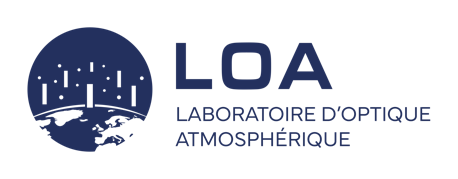24 July 2025
22 July 2025
About
Clouds play a fundamental role in the Earth's radiation budget, atmospheric dynamics, and hydrological processes. Their properties - such as frequency, height, and microphysical characteristics - directly influence radiative forcing and precipitation formation.
Additionally, clouds affect satellite-based measurements of surface and atmospheric parameters, including aerosols and trace-gases. Therefore, accurate retrieval of cloud properties from spaceborne sensors is essential for improving numerical weather prediction, climate modelling, nowcasting applications, and the retrieval of other atmospheric components. However, maintaining the accuracy and temporal consistency of these retrievals requires robust and ongoing validation efforts.
To serve this purpose, EUMETSAT provides its Member States - as well as other users worldwide - with satellite cloud data 24 hours a day, 365 days a year. EUMETSAT’s visible and infrared imaging missions are specifically designed to meet the needs of cloud imagery users. These missions are carried out by multipurpose, multi-spectral optical imagers that measure radiation emitted and reflected by the Earth from either geostationary (GEO) or Low-Earth orbit (LEO). The outgoing radiance at the top of the atmosphere is sampled across a spectral range from approximately 0.4 μm to 13 μm. The actual spatial resolution, spectral range and number of channels vary depending on the specific instrument https://www.eumetsat.int/our-satellites.
The EUMETSAT central facility generates and disseminates several Level 2 (L2) cloud products based on observations from its imaging missions. These products include cloud detection, cloud top height, and cloud microphysical properties. EUMETSAT is also responsible for the validation and monitoring of these products to ensure they meet user requirements for accuracy, continuity, and homogeneity throughout the mission’s lifetime.
Validation and monitoring results are made available to the users via the METIS portal. Efforts are also regularly undertaken to support the use of these products by providing documentation – such as Algorithm Theoretical Basis Documents (ATBDs) and Product User Guides – as well as visualization tools. For example, see An overview of the enhanced cloud and water vapour products from EUMETSAT new generation imagers.
The scope of the S2CLOP scientific framework is to support the ongoing development and application of EUMETSAT cloud products, ensuring they continue to meet evolving standards and user needs. The S2CLOP service is implemented by a consortium of cloud domain experts, led by the Laboratoire d'Optique Atmosphérique (LOA) at the University of Lille, and including also HYGEOS and ICARE/AERIS.




Objectives
The Scientific Framework for the Development of Cloud Products (S2CLOP) has the following objectives:
- Activity 1: Continuous activities on the understanding and optimisation of cloud retrieval techniques based on existing EUMETSAT algorithms , applied to relevant instruments.
- Activity 2: Application of novel techniques for cloud retrieval, including synergistic approaches that combine observations from multiple instruments (on the same or different platforms) and machine learning methods.
- Activity 3: Regular implementation of algorithm evolutions and system updates.
- Activity 4: Continued development of methods for performance assessment, including its definition, evaluation, validation, and monitoring.
- Activity 5: Generation of test data and investigation of anomalies.
Overview
Activity 1: Continuous activities on the understanding and optimisation of cloud retrieval techniques based on the existing algorithms at EUMETSAT and applied to the relevant instruments
Under Work Order 1 (WO1):
- Task 1.3: Concept for the exploitation of the O2 A-band and in EPS-SG cloud retrieval algorithms.
Activity 2: Application of novel techniques for cloud retrieval, including synergistic retrievals using observations from different instruments on the same platform or on other platforms and machine learning approaches
Under Work Order 3 (WO3):
- Task 3.1: Development of ML techniques for cloud detection threshold tuning (based on existing EUMETSAT algorithm/products) and new retrievals.
- Task 3.2: Development of a ML technique for the homogenization of day/night cloud products (based on existing EUMETSAT algorithm/products, starting with the Optimal Cloud Analysis).
- Task 3.3: Development of a ML approach for cloud vertical profiling.
Activity 3: Regular implementation of evolutions and updates
Under Work Order 1 (WO1):
- Task 1.1: Review and update of the 3MI cloud retrieval algorithm and prototype.
- Task 1.2: System for the generation of Look-Up Tables (LUTs) for EPS-SG cloud processors.
- Task 1.5: Concept for the use of 3MI measurements for future EPS-SG synergy products.
Under Work Order 2 (WO2):
- Task 2.1: Implementation of the Beta ratio in L2PF (requires update of FCI ATBD).
- Task 2.2: Implementation of full 2-layers model in L2PF.
- Task 2.3: Concept to adapt machine-learning techniques to OCA.
Activity 4: Continued development of methods to assess the performance, its definition, evaluation, validation, and monitoring
Under Work Order 1 (WO1):
- Task 1.4: Support to the development of EPS-SG validation tools for cloud products.
Under Work Order 2 (WO2):
- Task 2.4: Investigating the use of EarthCARE for the validation of FCI OCA products (following AVACS system, evaluation the comparison, etc.).
- Task 2.5: General support to the validation of FCI OCA products (in parallel with Task 1.4).
Under Work Order 4 (WO4):
- Task 4.1: Development of a tool for the colocation of single-sensor GEO cloud products to the GEO-ring L1 grid.
- Task 4.2: Development of a tool for the colocation of GEO-ring and EarthCARE cloud products.
Activity 5: Generation of test data and investigation of anomalies, etc.
No task so far.

